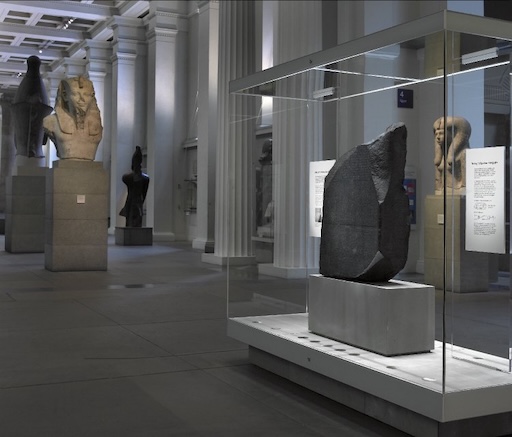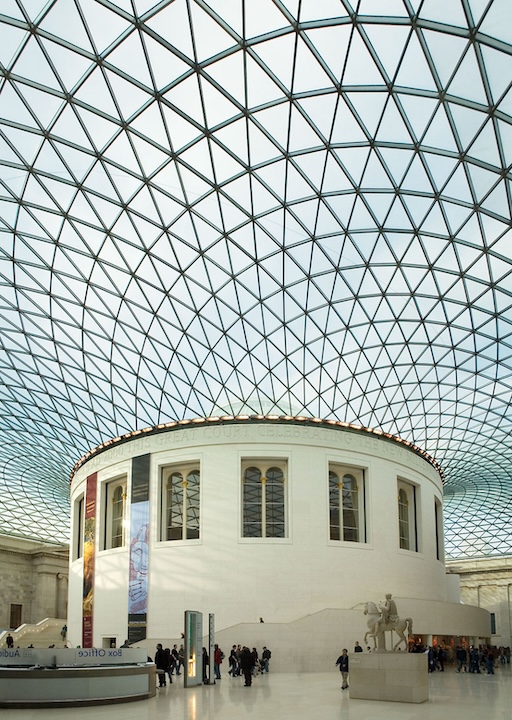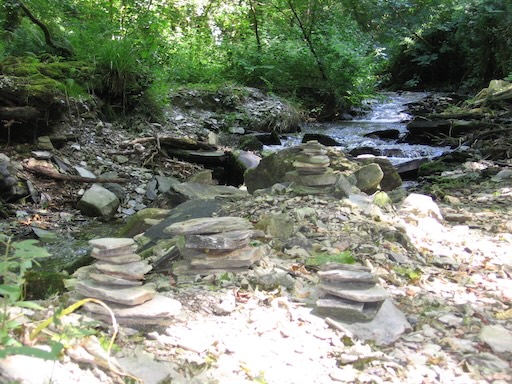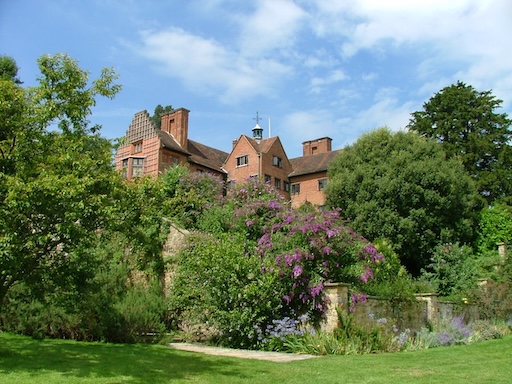
Imagine a place where you can walk from ancient Egypt to Imperial China, from the Inca Empire to medieval Europe — all without buying a plane ticket. Now imagine it’s free. Welcome to the British Museum, where more than eight million artifacts sit quietly waiting to blow your mind, one mysterious relic at a time.
Located in the heart of London, the British Museum isn’t just a museum — it’s a global time machine. Step inside and you’re immediately surrounded by stone tablets, glittering relics, and timeless stories etched in bronze, bone, and baked clay. And the best part? You don’t need a ticket. Admission is free, as it has been since 1759.
The Great Court: A Glass-Crowned Portal to the Past
Before diving into the ancient treasures, pause at the Great Court — a bright, jaw-dropping atrium covered by the largest glass roof in Europe. Sunlight pours in over white marble, casting shadows across the circular Reading Room where legends like Karl Marx and Virginia Woolf once studied.
It’s the museum’s modern heart, but the vibe is eternal. Kids run across the stone floor, cameras click, and voices from around the world murmur in dozens of languages. This is London at its most curious and connected.
Rosetta Stone: Cracking the Code
Let’s start with one of the museum’s rock stars: the Rosetta Stone. This cracked slab of granodiorite might look modest, but it changed history. Discovered in Egypt in 1799, it contains the same text in three scripts — hieroglyphs, Demotic, and ancient Greek — which allowed scholars to finally decode the mysteries of Egyptian writing.
Standing in front of it feels like meeting the ancient world’s Google Translate. It’s not just a rock. It’s a key that unlocked centuries of human knowledge — and it’s right here, under gentle museum lights, free to behold.

The Mummies Are Watching
If ancient Egypt fascinates you (and let’s be real, it fascinates everyone), the Egyptian galleries will feel like walking through a film set. You’ll find mummies in linen wrappings, gilded coffins, and painted tomb walls dating back over 3,000 years.
The air smells faintly of parchment and time. Eyes stare at you from inside glass — stone-carved, painted, preserved. You can meet the mummy of Katebet, a chantress in the Temple of Amun, or the famous Gebelein Man, preserved naturally in desert sand since 3400 BCE.
It’s haunting. It’s humbling. It’s history you can almost touch — if the glass wasn’t there.
Greece, Rome, and the Art of Empire
From marble gods to mosaic floors, the Greece and Rome rooms are a crash course in classical beauty. The most famous exhibit? The Elgin Marbles — sculpted panels from the Parthenon in Athens, carved around 447 BCE. These statues once stood atop the Acropolis, and now stand at the center of one of the world’s longest-running debates about cultural ownership.
Whatever your stance, their beauty is undeniable. Muscles ripple in white stone, drapery flows like real fabric, and faces bear expressions that still speak — even after 2,000 years.

Asia, Africa, and Beyond
Wander deeper and you’ll pass through rooms that echo with the art and spirit of Asia, Africa, and the Americas. Samurai armor stands silent and gleaming beside Chinese oracle bones. Nigerian bronze plaques catch the light beside Mayan jade masks and Aztec sacrificial knives.
Every corner holds a surprise. A Hawaiian feather cloak. A Tibetan ritual bell. A stone head from Easter Island staring with deep-set eyes. The museum doesn’t just display history — it confronts you with the scale and variety of human imagination.
Controversy in the Collection
Of course, not everything is wonder and awe. Many of the museum’s most prized pieces — from the Elgin Marbles to the Benin Bronzes — were taken during colonial times, often without consent. Debates about repatriation and ownership simmer through its marble halls.
The British Museum is actively responding. Loans, collaborations, and open discussions are shaping a future where museums may become bridges rather than vaults. Still, it’s important to walk these halls with both admiration and awareness.
Why It Still Feels Like Magic
In a city with no shortage of attractions, the British Museum holds a special kind of magic. It’s a space where time folds in on itself — where ancient scripts meet modern eyes, and long-gone voices find new listeners.
It’s also a rare reminder that knowledge should be shared, not gated. In a world where admission fees can be barriers, this place stands defiantly open. You walk in with nothing but curiosity, and walk out with your mind stuffed full of centuries.
Whether you come for Cleopatra’s mummy, a samurai sword, or a Babylonian lion carved in glazed brick — you’ll leave knowing more, feeling more, and craving your next historical rabbit hole.
Share this story and inspire others.
Tags: British Museum, London free museums, Rosetta Stone, ancient artifacts, Egyptian mummies, Elgin Marbles, global heritage, unique museums UK
 St. Nectan’s Glen – A Hidden Waterfall Steeped in Celtic Legend
St. Nectan’s Glen – A Hidden Waterfall Steeped in Celtic Legend
 Puzzlewood – A Real-Life Fantasy Forest in Gloucestershire
Puzzlewood – A Real-Life Fantasy Forest in Gloucestershire
 Fingal’s Cave – Scotland’s Singing Sea Cathedral of Stone
Fingal’s Cave – Scotland’s Singing Sea Cathedral of Stone
 Tower of London – The Fortress That Guards History
Tower of London – The Fortress That Guards History
 Alnwick Castle – Where Magic Meets Medieval Might
Alnwick Castle – Where Magic Meets Medieval Might
 Chartwell House – Where Churchill’s Spirit Still Walks the Halls
Chartwell House – Where Churchill’s Spirit Still Walks the Halls